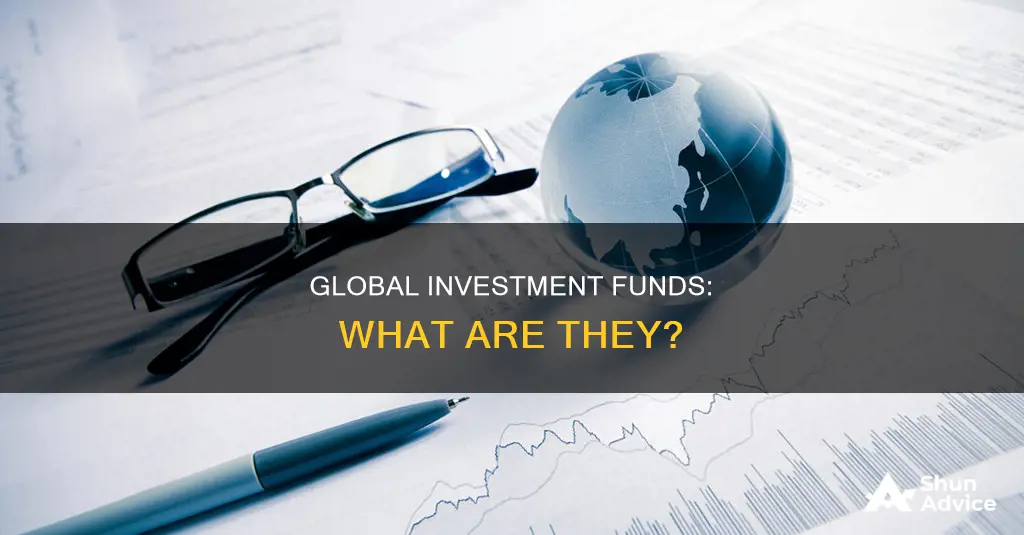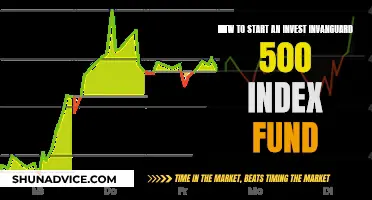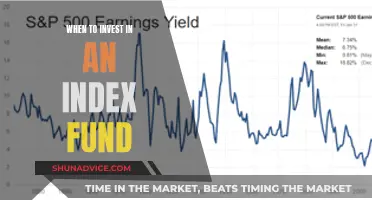
A global investment fund is a fund that invests in companies located anywhere in the world, including the investor's own country. Global funds seek to identify the best investments from a global universe of securities. They can be focused on a single asset class or allocated to multiple asset classes. Global funds provide investors with a diversified portfolio of global investments, which can increase an investor's potential return, albeit with some additional risks.
| Characteristics | Values |
|---|---|
| Definition | A global fund is a fund that invests in companies located anywhere in the world, including the investor's own country. |
| Investment goal | To identify the best investments from a global universe of securities. |
| Management | Global funds may be actively or passively managed. |
| Asset classes | A global fund can be focused on a single asset class or allocated to multiple asset classes. |
| Investment type | A global fund is a mutual fund or ETF. |
| Investor profile | Investors who wish to diversify against country-specific risk without excluding their own country. |
| Investment regions | Developed markets, emerging markets, and frontier markets. |
| Risk | Investing in global securities can increase risks, but global funds can help to mitigate these. |
| Investment options | Global debt and equity funds, hybrid funds, or passively managed index funds. |
What You'll Learn

Global funds vs international funds
A global investment fund is a mutual fund or ETF that invests in companies anywhere in the world, including the investor's own country. Global funds seek to identify the best investments from a global universe of securities. They can be focused on a single asset class or allocated to multiple asset classes.
Now, when it comes to global funds vs international funds, there are some key differences to note:
Global Funds:
- Global funds consist of securities from all over the world, including the investor's home country.
- They are chosen by investors who want to diversify their portfolio and protect against country-specific risks without excluding domestic investments.
- The mix of domestic and foreign investments in global funds can offer a hedge against country-specific risks. If one country's market is down, positive performance in other countries can balance it out.
- Global funds provide some domestic exposure, so investors already invested in their home country should check for duplicate investments before choosing a global fund.
- Global funds allow portfolio managers to shift investments between domestic and international markets to take advantage of shifts in relative opportunities.
- One challenge of global funds is that investors may not always know their total exposure to a specific market, such as the US market, at a given time.
International Funds:
- International funds consist of securities from all countries except the investor's home country.
- They provide diversification for investors who primarily hold domestic investments and want to expand their portfolio internationally.
- International funds can invest in developed or emerging markets. They do not invest in every country, and some specialise in specific regions.
- International funds do not provide domestic exposure, so they are a good choice for investors who want to avoid duplicating their existing domestic investments.
- As with global funds, investing in international funds comes with additional risks, including currency exchange rates, political risks, foreign taxes, regulations, and the potential for illiquid markets.
In summary, the main difference between global and international funds is the inclusion or exclusion of the investor's home country. Global funds offer a mix of domestic and foreign investments, while international funds focus solely on foreign markets. Investors should carefully consider their existing portfolio, risk tolerance, and investment goals when deciding between these two types of funds.
Mutual Fund SIPs: Where to Invest for Maximum Returns
You may want to see also

Diversifying against country-specific risk
Global funds are a type of mutual fund or ETF (exchange-traded fund) that invests in companies located anywhere in the world, including the investor's own country. They seek to identify the best investments from a global universe of securities and can be focused on a single asset class or allocated to multiple asset classes.
One of the key benefits of investing in global funds is the ability to diversify against country-specific risk. By investing in a mix of domestic and foreign investments, investors can reduce their exposure to the risks associated with a single country or market. This diversification strategy can help to mitigate some of the risks and fears that investors may have when considering international investments.
Country-specific risk, also known as country risk, refers to the economic, political, and business risks unique to a specific country that could lead to unexpected investment losses. These risks include political decisions, economic instability, sovereign default risk, and foreign exchange regulations. By diversifying across different countries and regions, investors can reduce the impact of country-specific risks on their portfolio.
When diversifying against country-specific risk, it is important to consider the correlation between the investments in your portfolio. Even if you own many different investments, if they are all tied to the same country or region, your portfolio is not effectively diversified. Instead, aim for a mix of investments that are expected to perform differently in various environments. For example, if you only own U.S. securities, your entire portfolio is subject to U.S.-specific risk. By adding foreign stocks and bonds, you can increase your portfolio's diversification, although these investments come with their own set of risks, such as foreign taxation, currency risks, and political and economic development risks.
To further enhance diversification and manage risk, investors can choose to invest in both global debt and equity funds or hybrid funds, which offer exposure to multiple asset classes. Actively managed global funds and passively managed index funds are also options to consider, depending on your investment goals and risk tolerance.
Actively Managed Funds: Where to Invest Your Money?
You may want to see also

Global funds and risk mitigation
Global funds are a type of investment fund that seeks to identify the best investment opportunities worldwide, including in the investor's own country. They provide investors with a diversified portfolio of global investments, which can increase potential returns and help mitigate risks.
One of the key advantages of investing in global funds is the ability to diversify across different countries and markets. By spreading their investments globally, investors can reduce the impact of country-specific risks, such as economic downturns or regulatory changes in a particular nation. For example, if there is negative news in one country that drives down its market, a global fund can leverage investments in other countries that may be experiencing positive economic growth.
Global funds can also provide exposure to both developed and emerging markets. Developed markets, which are characterised by mature economies and efficient financial infrastructures, offer stable investment opportunities. On the other hand, emerging markets, which include some of the largest and fastest-growing economies, often provide greater potential for higher returns. However, they also carry more risk due to their dynamic and less mature nature.
Additionally, global funds can be actively or passively managed. Actively managed global funds are a popular choice for investors as they aim to generate higher returns while managing risk. On the other hand, passively managed index funds can provide broad market exposure and diversification benefits.
To further enhance risk mitigation, investors can choose to invest in both global debt and equity funds or hybrid funds. These funds diversify across asset classes, reducing the impact of any single market or asset class on the overall portfolio.
It is important for investors to understand the types of investments included in global funds and the associated risks. Regulations and protections for investments vary across countries, and some nations have been known to exert government influence over specific industries. Therefore, due diligence is crucial when considering global fund investments to ensure a comprehensive understanding of the potential risks and opportunities.
Mutual Fund Investment: Smart Money Moves to Make Now
You may want to see also

Actively and passively managed global funds
A global investment fund is a fund that invests in companies located anywhere in the world, including the investor's own country. Global funds seek to identify the best investments from a global universe of securities. They can be focused on a single asset class or allocated to multiple asset classes.
Now, onto the differences between actively and passively managed global funds. Actively managed global funds are a popular choice for investors. They involve a hands-on approach, with a portfolio manager or other active participant making investment decisions for the fund. The success of the fund depends on in-depth research, market forecasting, and the expertise of the management team. The fund managers follow market trends, shifts in the economy, changes to the political landscape, and other factors that may affect specific companies. This data is used to time the purchase or sale of assets. Active management portfolios strive for superior returns but take greater risks and entail larger fees.
On the other hand, passively managed global funds, also known as index funds, aim to replicate the performance of a particular market index or benchmark. They are designed to parallel the returns of a chosen index as closely as possible. For example, if an index has a particular stock that represents 3% of its total value, a passive fund will also allocate 3% of its portfolio to that stock. This investment strategy is less proactive and has lower management fees. While passive funds have lower fees, they will rarely outperform the market and can be limited in their investment choices.
Both actively and passively managed global funds have their advantages and disadvantages. Actively managed funds offer more flexibility and the potential for higher returns, but they also come with higher fees and greater risk. Passively managed funds, on the other hand, offer lower fees, transparency, and tax efficiency, but they may not provide the same level of returns as actively managed funds. Ultimately, the choice between active and passive management depends on an investor's goals, risk tolerance, and investment horizon.
Tata AIA Multi-Cap Fund: Smart Investment Strategy
You may want to see also

Global funds and mutual funds
Global Funds
Global funds are investment funds that invest in companies and securities located anywhere in the world, including the investor's own country. The primary objective of global funds is to identify the best investment opportunities from a wide range of options available globally. These funds can be actively or passively managed and may focus on a single asset class or allocate their investments across multiple asset classes.
Global funds provide investors with a diversified portfolio, reducing the risk associated with investing solely in their domestic market. By investing in international securities, investors can increase their potential returns, although it may also expose them to additional risks. Global funds can invest in developed, emerging, or frontier markets, each presenting different characteristics and risk profiles.
Mutual Funds
Mutual funds, on the other hand, are investment vehicles that pool money from multiple investors to purchase a diversified portfolio of assets, such as stocks, bonds, or other securities. These funds are overseen by professional fund managers, who make investment decisions on behalf of the investors. Mutual funds can be classified as open-end or closed-end funds and are a popular way for individuals to invest in a variety of securities.
Global Mutual Funds
Global mutual funds combine the features of both global funds and mutual funds. They allow investors to access international markets and diversify their portfolios by investing in companies spread across the globe. Global mutual funds are particularly attractive to investors who want to explore opportunities beyond their domestic market and seek to mitigate country-specific risks.
Global mutual funds can be structured in different ways, such as direct investment, indirect investment (feeder funds or fund of funds), or a mix of foreign and domestic equity. They can also be classified as regional funds or truly global funds, depending on their investment focus.
Investing in global mutual funds offers several benefits, including the opportunity to invest in high-growth markets, insulation from domestic market fluctuations, and the potential for attractive returns. However, investors also need to consider the associated risks, such as market risks, currency exchange rate fluctuations, and the impact of varying regulatory environments in different countries.
Smart Strategies for High-Yield Mutual Fund Investments
You may want to see also
Frequently asked questions
A global fund is a fund that invests in companies located anywhere in the world, including the investor's own country. It seeks to identify the best investments from a global perspective.
A global fund provides investors with a diversified portfolio of global investments. Investing in international securities can increase an investor's potential returns, with some additional risks. A global fund can help to mitigate some of these risks.
Around the world, investment regions are usually described as developed, emerging, or frontier markets. Developed markets represent mature economies with efficient infrastructures, while emerging markets are some of the largest and fastest-growing economies, and frontier markets are the least developed and highest risk.







